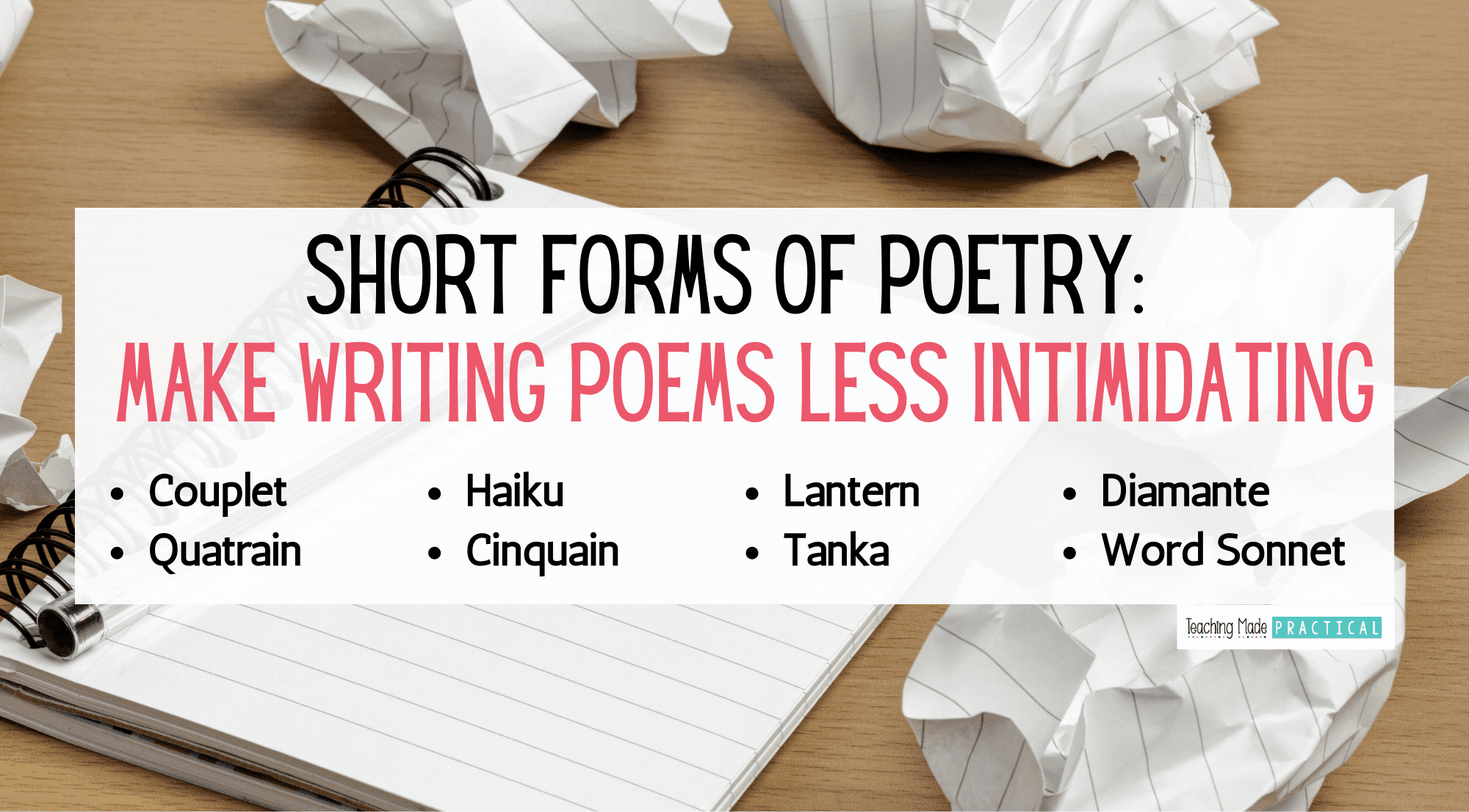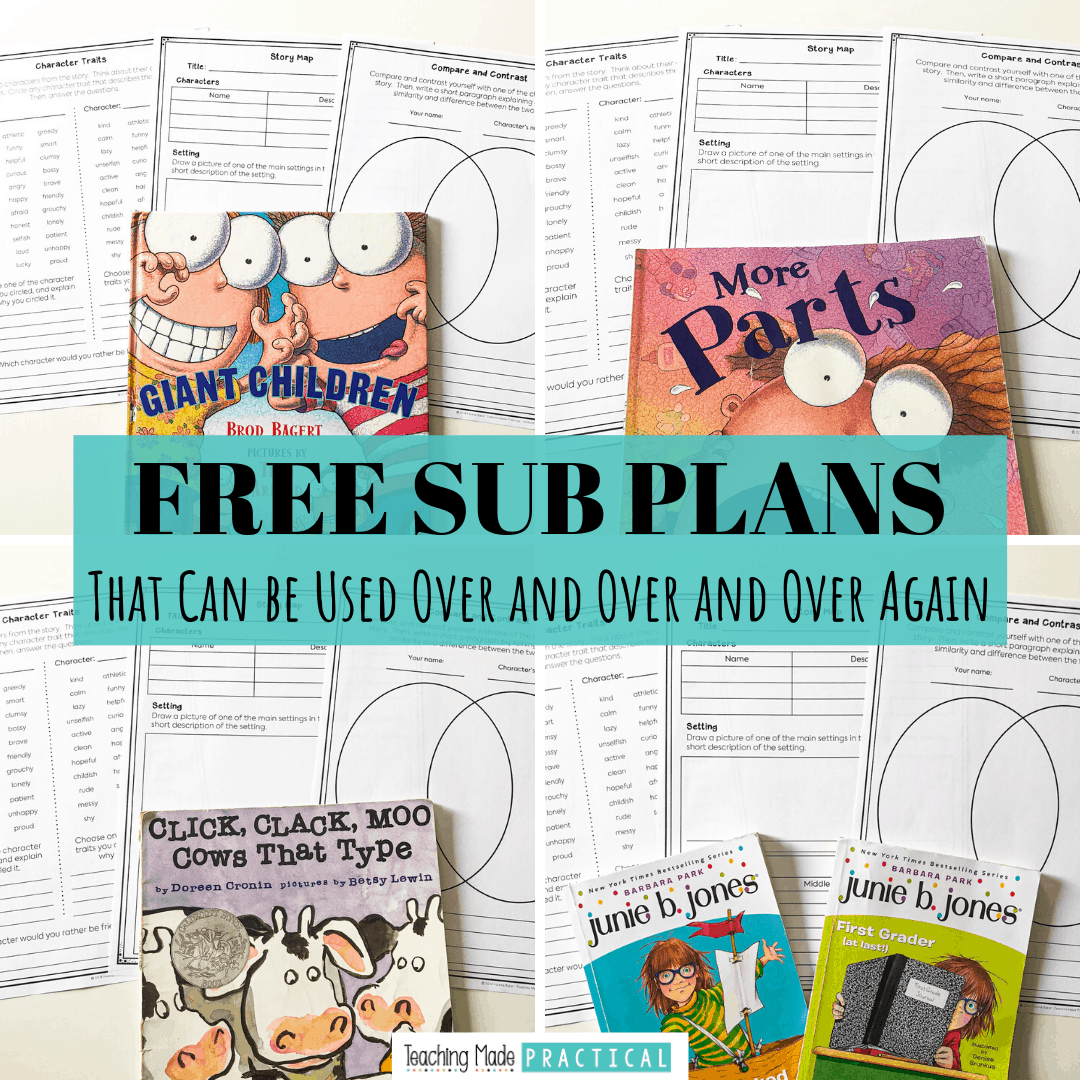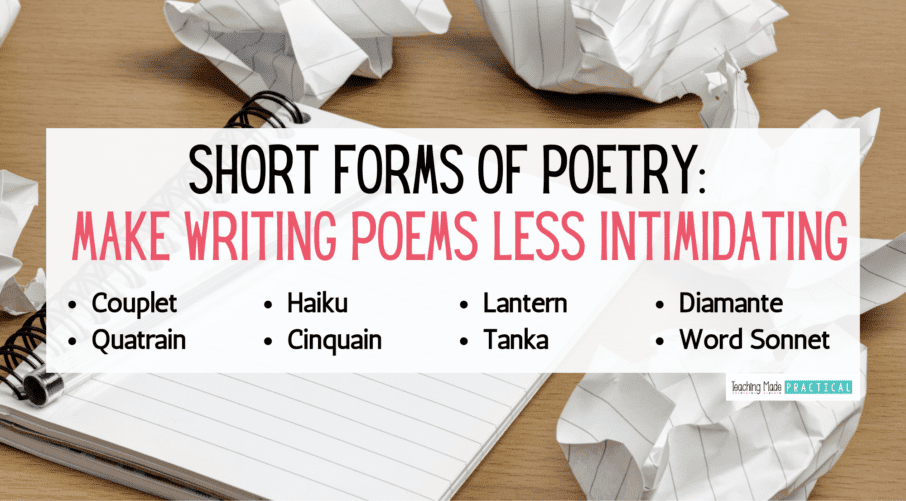
Short Poems Your 3rd, 4th, and 5th Grade Students Will Love to Write
1. Couplets
With only 2 lines, couplets are a very un-intimidating first poem to write.
Scaffold your students' first poems by providing them with the 2 rhyming words - then have them write the rest! After finishing their poems, students will be able to quickly share them with a partner or the class.
Possible rhyming words:
- pies/flies
- splash/trash
- inspire/admire
- scissors/lizards
- confess/recess
- fraction/subtraction
- cloudy/rowdy
After upper elementary students are comfortable with writing couplets, have them come up with their own rhyming words. You can give them a topic to write about (a great way to integrate science or social studies), or let them write about whatever they want.
2. Quatrains
After creating a few couplets, a natural next step is to have your 3rd, 4th, or 5th grade students put two couplets together to create a quatrain! A quatrain is simply a poem or stanza that has 4 lines.
This is a great time to introduce rhyme scheme as well. Most quatrains follow either an AABB or ABAB rhyme scheme.
As with the couplets, you could scaffold student writing by providing them with the rhyme scheme and the rhyming words.
3. Haiku
A haiku is a 3 lined, non-rhyming poem that usually follows a specific syllable pattern. It's clear structure makes it an ideal poem for beginning poets.
Read some of these haiku examples with your students before having them create their own.
If you want to go a little more in depth with haiku, then check out this No Prep Haiku Unit. It includes poems, comprehension questions, activities, a haiku writing project, and more.
4. Cinquain
A cinquain is a 5 lined poem that follows specific guidelines. There are several variations of cinquain poems, but beginning poets will like the structure of one of the most popular variations.
Line 1: 1 word - the subject of a the poem (a noun)
Line 2: 2 words - describing the subject (adjectives)
Line 3: 3 words - relating to the subject (-ing words)
Line 4: 4 words - relating to the subject (a phrase)
Line 5: 1 word - a synonym of the subject (a noun)
Providing a template like the one in this No Prep Poetry Writing Packet will help your 3rd, 4th, and 5th grade students write this poem successfully.
And check out these activity ideas if your students need a parts of speech review - or get this noun freebie!
5. Lantern Poems
Lantern poems are short and sweet. Students pick a topic, and then write 5 short lines about that topic. Each line has a certain number of syllables. Students will have to think carefully about their topic - it usually goes in the first line, and the first line can only have 1 syllable!
Line 1: 1 syllable
Line 2: 2 syllables
Line 3: 3 syllables
Line 4: 4 syllables
Line 5: 1 syllable
You could have students use this poetry website to create their lantern poems.

6. Tanka
A tanka starts off like a haiku but it has 2 additional lines, each with 7 syllables.
If your students have been successful with writing haiku, then challenge them to extend their poems with these 2 additional lines!
7. Limericks
Limericks are a favorite with students because they are SUPPOSED to be a little ridiculous and often include hyperbole. Take this poem by Edward Lear, for example:
There was a Young Lady whose nose,
Was so long that it reached to her toes;
So she hired an Old Lady,
Whose conduct was steady,
To carry that wonderful nose.
The rhythm and structure of this poem is a little more complicated than some of the others, so a template and plenty of examples will make it easier for your students to write a successful poem without frustration. This No Prep Limerick Packet provides plenty of humorous examples, checks their comprehension, and walks them through the steps of writing their own limerick.
8. Diamante Poems
A diamante poem is similar to a cinquain, but it has 7 lines instead of 5. The poem is structured so that the words form the shape of a diamond.
Line 1: 1 word – the topic of the poem
Line 2: 2 adjectives or words describing the topic
Line 3: 3 verbs describing the topic (words ending in –ing)
Line 4: 4 nouns describing the topic
Line 5: 3 verbs describing the topic (words ending in –ing)
Line 6: 2 adjectives or words describing the topic
Line 7: 1 word – a synonym to the topic
Having a template - like the one in this No Prep Poetry Writing Packet - will help scaffold the process for your students. It will also make the diamond shape more obvious!
9. Word Sonnet
A real sonnet is a more advanced form of poetry (think Shakespeare) with a rhythm structure that would be challenging for almost any upper elementary student. But you can ease your students into this form of poetry by having them create word sonnets!
A word sonnet, like a regular sonnet, has 14 lines. A word sonnet, however, only has one word on each line! When written out, it creates a striking visual.
To scaffold, provide students with a topic and have them come up with a sentence about that topic that has exactly 14 words. Then, write each of those words out, one word per line.
Using Templates to Introduce Poetry Writing to Upper Elementary
This No Prep Poetry Writing Packet provides templates for all of the poems mentioned above - and more! Using the templates will help your students be more confident and more successful as they begin writing poems.
It includes templates for all of the forms of poetry mentioned above - and more!
Looking for more poetry ideas? Check out these 11 fun poetry activities!
Never Stress Over Sub Plans Again!

Make copies, find a fiction book, and you'll be ready for any emergency that comes your way!

